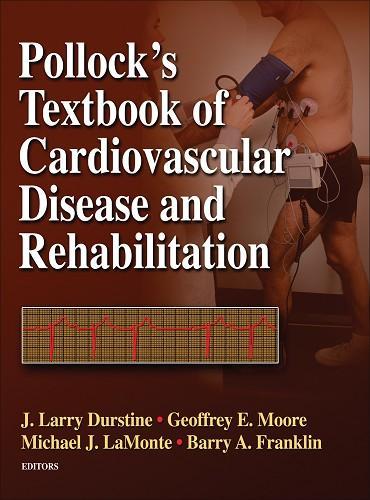Kuvaus
Pollock’s Textbook of Cardiovascular Disease and Rehabilitation
Pollock’s Textbook of Cardiovascular Disease and Rehabilitation honors the legacy of the late Michael L. Pollock, PhD (1936-1998). Pollock, an innovative and influential cardiac researcher and clinician, was highly regarded for his substantial educational and scientific contributions to the field of exercise science and sports medicine. This text presents an approach to cardiovascular disease rehabilitation as comprehensive as the vision that Dr. Pollock so passionately pursued during his 35-year career.
Pollock’s Textbook of Cardiovascular Disease and Rehabilitation addresses developing topics encompassing all aspects of the cardiovascular system. This text breaks away from Medicare-driven reimbursement paradigms for “cardiac rehabilitation” to discuss the entire cardiovascular system, not only coronary heart disease. In doing so, it provides a much-needed perspective for health professionals and their patients, especially those patients who need help but do not fit traditional entry criteria for cardiac rehabilitation.
The text’s editors, each a premier cardiovascular science expert, have selected an internationally recognized list of contributors to provide the deliberate and systematic coverage of cardiovascular topics in five comprehensive parts. They begin by laying a foundation that covers the historical and epidemiologic overview of the evolution and current state of cardiovascular disease (CVD). This consists of a discussion of the use of exercise as medicine as well as a description of interventions, clinical guidelines, and outcomes.
The text continues by addressing pathophysiology, diagnosis of conditions (such as peripheral arterial disease, stroke, and aneurysm), and medical management strategies. Readers will find a current pharmacologic review of medications, the mechanism of action, side effects, and exercise interactions, in addition to current surgical techniques. They will also find an entire chapter dedicated to heart disease in women. Often overshadowed by the attention given to cancer, heart disease is the predominant killer of women, yet few texts cover the topic as thoroughly as Pollock’s Textbook. Because the female population presents specific concerns and cardiovascular complications, this chapter alerts physicians and health practitioners of the elements they must consider when managing heart disease in these patients.
Once readers understand the theories behind diagnosis and management of CVD, they are led through the facets of lifestyle issues associated with CVD. Research-based information provides outlines for endurance, strength, and flexibility training specific to CVD; nutrition and dietary factors as well as pharmacotherapies associated with reducing CVD risk; and rehabilitation strategies for specific cardiovascular conditions. More specific information follows on common comorbidities and complicating circumstances associated with cardiovascular disease. Part IV of the text is dedicated entirely to this aspect of the disease. The first half of the part focuses on the range of comorbidities including hypertension, diabetes, obesity, and dyslipidemia; the second half discusses complicating circumstances such as arthritis, psychosocial risk, complications due to stroke, neuropsychiatric disorders, and aspects of sleep. These risk factors are important for physicians to consider in the evaluation and treatment of cardiovascular diseases, particularly as they are planning rehabilitation programs. The text concludes with a more practical-based part to help those readers understand the rehabilitation process and apply the research to specific cardiovascular conditions.
Pollock’s Textbook on Cardiovascular Disease and Rehabilitation is a comprehensive text that seeks to honor the late Dr. Michael Pollock. The text reflects the growth of the profession by assisting all health professionals who continue to focus, in both research and practice, on finding answers to alleviate cardiovascular disease. By bringing readers the current research on developing topics, both scientific and clinical, the text manages to break the traditional mold and move into a broader area focused on the cardiovascular system as a whole.
ISBN: 9780736059671
Publisher: Human Kinetics
Published: 2008
Page Count: 432





